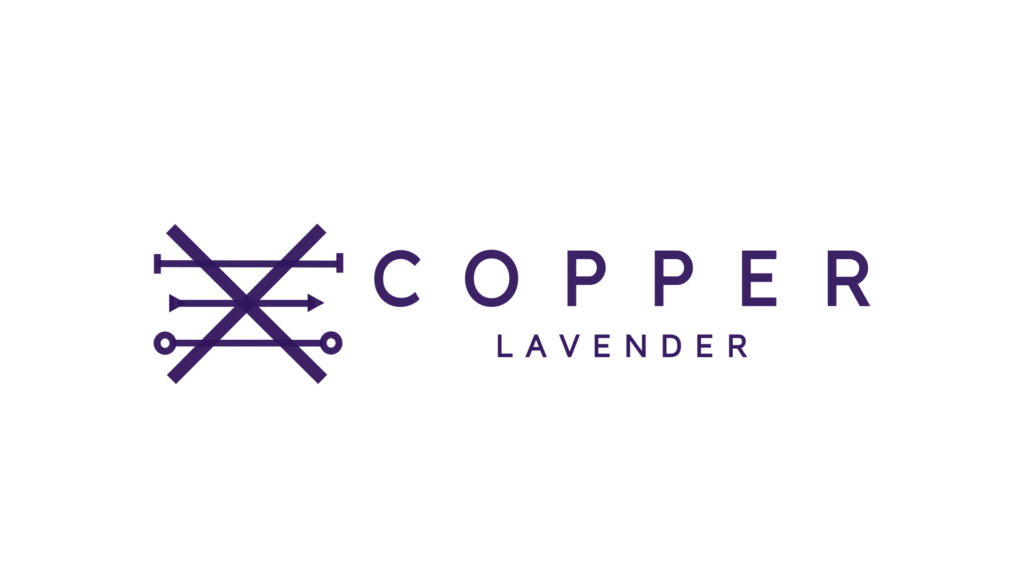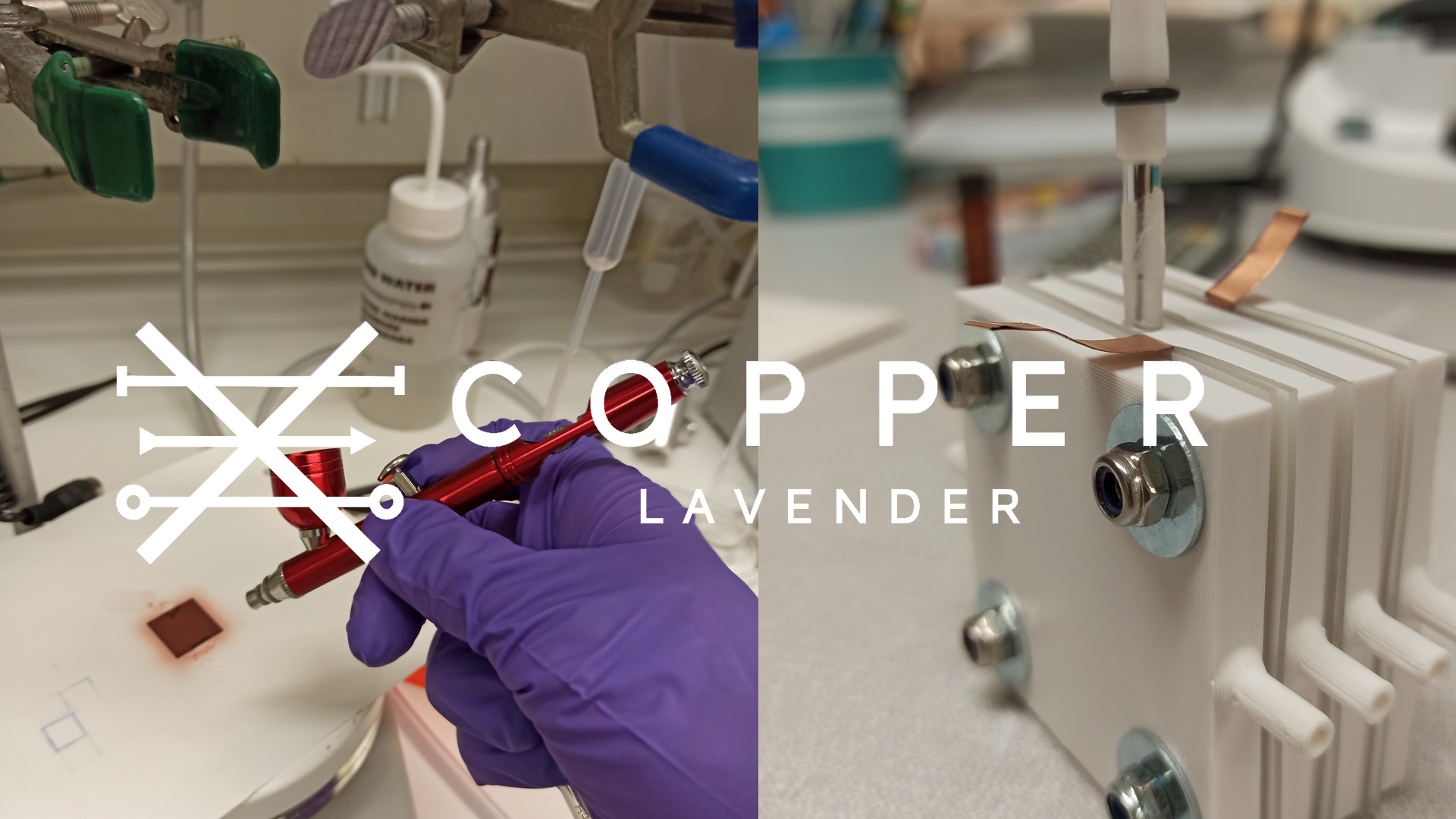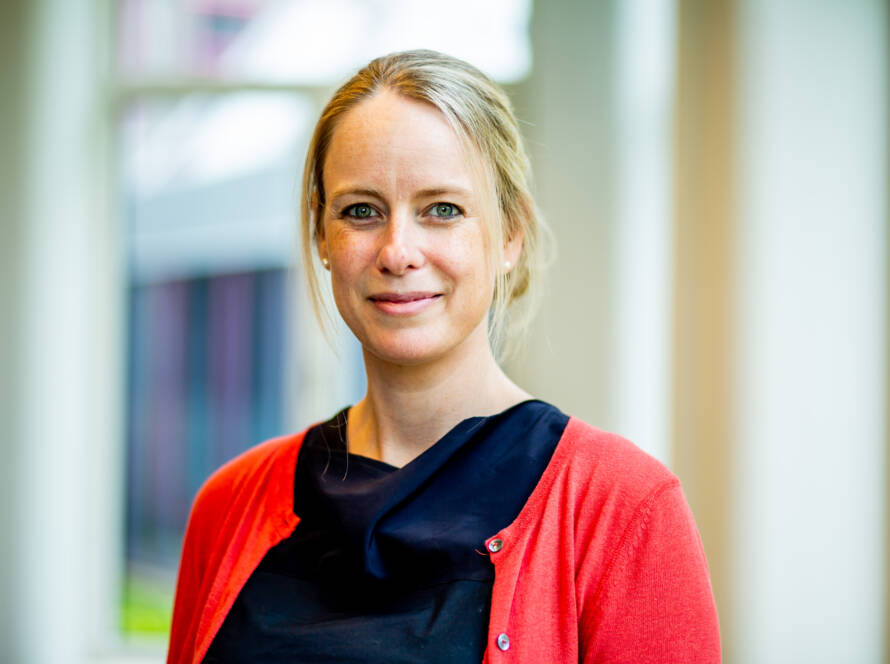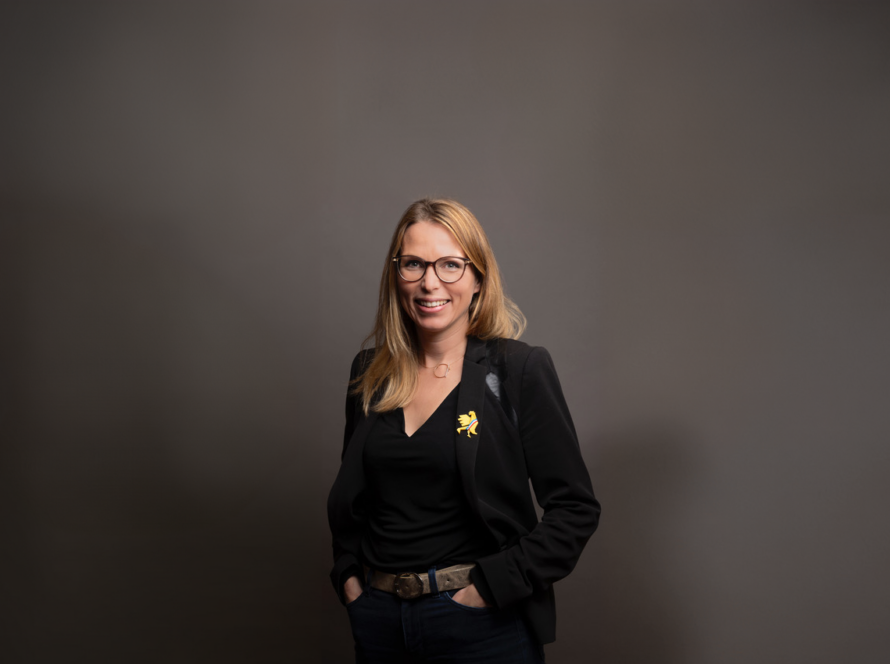Why are you called Copper Lavender?
“Copper catalyses the transformation of CO₂ into organic compounds and symbolizes our role as a catalyst for change. Lavender signifies our mission to produce complex, fragrant compounds. Our first go to market is to make perfume using this recycled CO₂.”
What inspired you to making the chemical industry circular?
“I’m a chemist — through and through. From early on, I dreamed of using it to create something big and meaningful. In September 2019, I watched Greta Thunberg speak at the UN — and her message hit me hard. I realized: this is it. We have a massive problem — carbon dioxide — and I have the tools, knowledge and passion to help solve it. From that point on, my mission became to help lead a new industrial revolution — one where we replace fossil carbon with recycled CO₂.”
“I knew if I wanted to build a climate startup that survives and scales, I had to start in the luxury space, where people are willing to pay a premium for innovation. Same strategy Tesla used. Founding Copper Lavender was the first step.”
Hardly anyone knows acetylene, so frequently used in the chemical industry, is solely coming from fossil based feedstock. Explain your novel electrochemical process? How does it convert CO2?
“While many are working on converting CO₂ into common molecules like methanol or ethylene, we’re the only ones developing a technology to turn CO₂ into acetylene, a gateway to high-value chemicals used in fragrances, pharmaceuticals, polymers, coatings and more.
We didn’t arrive at this idea by chance. I didn’t set out wanting to make acetylene.
Greta’s talk was a push for me to start a business focused on CO₂ conversion. Around that time, I read about Air Company making ethanol from CO₂. Instead of selling it as fuel ($1/L) or solvent ($6/L), they sold it as vodka for $190/L. That clicked for me: if I wanted to build a climate startup that survives and scales, I had to start in the luxury space, where people are willing to pay a premium for innovation.
I’ve always loved perfumes and the chemistry behind them, so it felt natural to start there. But perfumes are made from thousands of different ingredients — so I asked perfumers: which one should I make first from CO₂? The answer was citral, a key fragrance ingredient. From there, we worked backwards — breaking citral into its chemical building blocks — and that led us to acetylene.
Once we identified acetylene as the key molecule, we designed a two-step electrochemical process to produce it from CO₂ using a custom intermediate we call the acetylene precursor.
This is what makes our approach innovative: it began with a top-down strategy, pulled directly from market needs. We started with the end goal in mind — citral — and built the chemistry to reach it.
Now that we’ve identified acetylene as our platform, we’re also exploring its potential in a wide range of industries. What began as a fragrance solution has become a broader vision: using CO₂ to create a family of valuable, sustainable chemicals — with acetylene at the core.”

Tell me about the carbon footprint of standard perfumes compared to conventional perfume ingredients?
“There are thousands of perfume ingredients, and their carbon footprints vary a lot — so to make a fair comparison, I suggest we focus on our platform molecule: acetylene.
Producing one kilogram of the widely used fossil-based acetylene typically releases about 3–4 kg of CO₂ into the atmosphere. We do the opposite: we convert around 3.3 kg of CO₂ to make 1 kg of acetylene. And if we power our process using Swedish renewable electricity — like hydropower — we also avoid the emissions from fossil energy.
That means, in total, our process can reduce emissions by around 6 kg of CO₂ for every kilogram of acetylene we produce.”
How does your technology complement other climate solutions and where do you see your approach fitting into the broader climate solution landscape?
“We see our approach as a missing puzzle piece. While others work on capturing carbon or shifting to renewable energy, we’re building the next step — a fossil-free alternative to chemical production, using CO₂ as a feedstock.
In the long run, this could be a new benchmark for a post-fossil chemical industry. One where emissions aren’t just reduced — they’re rerouted into products that power daily life, from perfume to plastics.”
With the enormity of the challenge in front of us, how do you define success for Copper Lavender in the world?
“If in the future, only a small proportion produced from CO₂ is using Copper Lavender processes, that would be a huge success. It would mean we’ve built something that not only works in the lab, but actually reshapes how the world makes essential materials— from perfumes to plastics.
But to me personally, success means that CO₂ is no longer seen as just a problem, but as a valuable resource. It means we’ve shown that a fossil-free chemical industry is not only possible, but scalable.”
What do you wish others outside the climate space knew that those inside it do know?
“Until now, CO₂ conversion has mostly been linked to climate topics. But it’s no longer just a climate issue, because fossil carbon mostly comes from outside the EU, often from non-democratic and aggressive countries that, in exchange for their fossil resources, expect us to accept their will. If we want to keep our lifestyle and remain a true bastion of democracy, we still need carbon — for things like plastics, medicines, and materials. Even our military depends on carbon — for fuels and explosives. But we need it from other sources.
So this is also about self-sufficiency and resilience. We need to learn how to make all these things here in Europe, using our own renewable energy and resources. And CO₂ conversion technologies could greatly help with that.”
*.*
Interested in more founders’ stories? Subscribe to our newsletter.
Interested in regular CarbonFix updates? Connect on LinkedIn.




